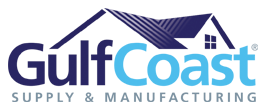 Category 4 Hurricane Michael made landfall on the Florida Panhandle in October, 2018. Amid the catastrophic damage, especially in Mexico Beach, FL, a handful of relatively untouched buildings garnered national attention.
Category 4 Hurricane Michael made landfall on the Florida Panhandle in October, 2018. Amid the catastrophic damage, especially in Mexico Beach, FL, a handful of relatively untouched buildings garnered national attention.
Five metal-roofed homes, all built by Habitat for Humanity, remained standing in the storm’s aftermath. Resident Christina Harding rode out the storm in one of those houses. Her daughter, who was out of town, was frantic when she couldn’t reach her mother, but said she was reassured when she noticed the roofs in aerial photos of the area.
Metal’s Resistance to High-Wind Events
Metal roofs can be a wise decision and a good investment in hurricane-prone areas.
Traditional asphalt shingles are prone to blow-offs. Each shingle that comes loose weakens the roofing system and leaves the home susceptible to water as well as wind damage. Metal roofs, on the other hand, not only stay in one piece, they also excel at protecting against wind-driven rain.
In wind uplift tests, metal roofs earn a 140-mph wind rating, according to the Metal Roofing Alliance, and some can withstand gusts up to 180 mph. Hurricane Michael’s strongest winds were 155 mph, though as the storm came ashore, gusts were in the 104 and 129 range.
Uplift tests are conducted in a laboratory and simulate the effects of high-speed winds by subjecting a mock-up of a roof to increasing air pressure from underneath. The rating reflects the last wind speed the roof is able to withstand before failing.
Factors that contribute to metal roofs’ superior wind resistance include the attachment methods and the interlocking and overlapping panel system which when correctly installed, leaves little area for storm winds to penetrate under the roof panels and cause uplift.
Metal roofing systems are available in hidden fastener, exposed fastener and stamped options.
Of the three varieties, metal standing seam panels with concealed clips/fasteners and four-way interlocking designs perform the best in extreme weather, reducing the overall uplift risk of the roof system. The system is commonly used in residential installs as well as most commercial metal roofing applications.
Fasteners can be either exposed or concealed. Concealed fasteners last longer because they are shielded from the elements. Exposed fasteners, on the other hand, attach roof panels more securely, but need to be replaced sooner.
In addition to a metal roof’s panel or shingle style, using two clips instead of just one at the eaves, ridges, and hips, and applying sealing tape improves a roof’s durability and increases wind resistance.
Both clips and fastener screws should be stainless steel for aluminum panels or galvanized for steel and painted steel applications. They should also be able to withstand years of high humidity conditions.
Metal Roof Performance in Other Natural Disasters
Metal roofs also perform well in disasters such as earthquakes and fires.
Because metal roofs are lighter, they contribute to lower bearing pressure. The lower mass of lightweight metal roofs generates smaller inertial forces when the structure is exposed to seismic activity laterally. And less roof bracing is required to help metal roofs resist both gravity and seismic loads.
In a wildfire situation, flaming branches, leaves, and other debris carried by the wind often land on the roofs of homes. Metal is fire resistant, providing more effective protection for the structure.
Fortify Your Home with a Metal Roof
Metal roofing can provide an extra layer of protection for residents of hurricane-prone areas as well as people who live near forests or fault lines.
Gulf Coast Supply & Manufacturing offers aluminum, steel and Galvalume roofing panels and metal roof components in custom colors. To see what your home would look like, the Proof My Roof Color Visualizer lets you experiment with styles and colors.
For more information about metal roofs, visit Gulf Coast Supply & Manufacturing online at GulfCoastSupply.com, or call 888.393.0335.
